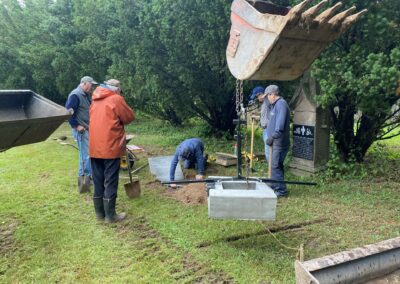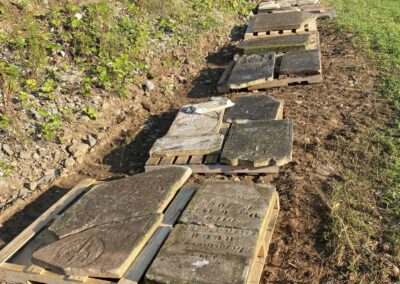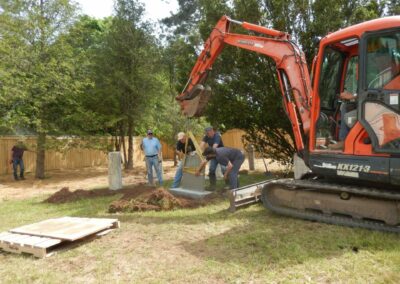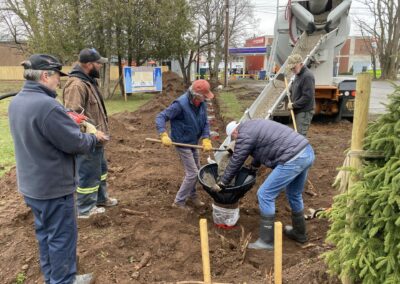Saint Ninian Pioneer Cemetery
The Pioneer Cemetery was established in 1824 when Father Fraser obtained a parcel of land on Main Street in order to build a church. The Cemetery was laid out to contain 185 plots. In 1874, the new Saint Ninian Cathedral was officially dedicated, and the former on Main Street was converted into a school. The last burial in the Main Street cemetery occurred in 1877.
Since then, three buildings and a parking lot have been constructed on the cemetery property. In 1981, the remaining 46 headstones were laid flat, in a semicircle formation, at the back of the cemetery property.
Pioneer Cemetery Heritage Project
It is only in recent years that we have come to the realization that we have neglected our ancestors and the contribution they made to our society. We must tell the story of these courageous men and women in words that will inspire our children to take pride in the mighty accomplishments of their forebears.
The history of our pioneers, often forgotten, is the foundation of our town and community. Therefore, the Pioneer Cemetery Committee has made the commitment to honour them by restoring their resting place, and by telling their stories.
The effort to restore the old cemetery started in 2020, when the remaining headstones were moved for safekeeping. Since then, more than two thousand hours of volunteer work were poured into restoring the site. The remaining stones have been reinstalled, a Celtic cross commissioned to hour our ancestors, and the history of those buried there researched and documented.
Picture yourself having to leave the only community you ever knew, either because of political or religious persecution in Ireland or Scotland. Most had no money, many had small children. They sold what little they owned to pay their passage to the unknown. They got on ships not much better than a cattle boat, and survived a challenging journey. They arrived in Nova Scotia penniless.

Picture yourself getting off the boat in Pictou about the year 1800. What do you see? No town. No motel to put you up for the night. No road to follow to your new home. No new home. You walk along the shore, through the woods, through brooks and swamps. All you have is what you can carry.
When you arrive at your destination in Antigonish what do you see? Nothing but forest. You must cut trees to make a shelter. They had no infrastructure or support system.
These great people transformed a wooded wilderness into thriving communities in only one generation. They built homes, barns, schools, churches, roads and bridges. They cleared the forests, made fields and planted crops. They formed governments and structured their communities. But their greatest gift to us was the peaceful society that they created.
Yet, here in Antigonish, the Irish, the Scottish, the French, the English, and the Mi’kmaq were able to live in peace. What a lesson for today’s world. We have not given sufficient credit to these pioneers for the huge contribution they made to our communities. We are the beneficiaries of their great work.



